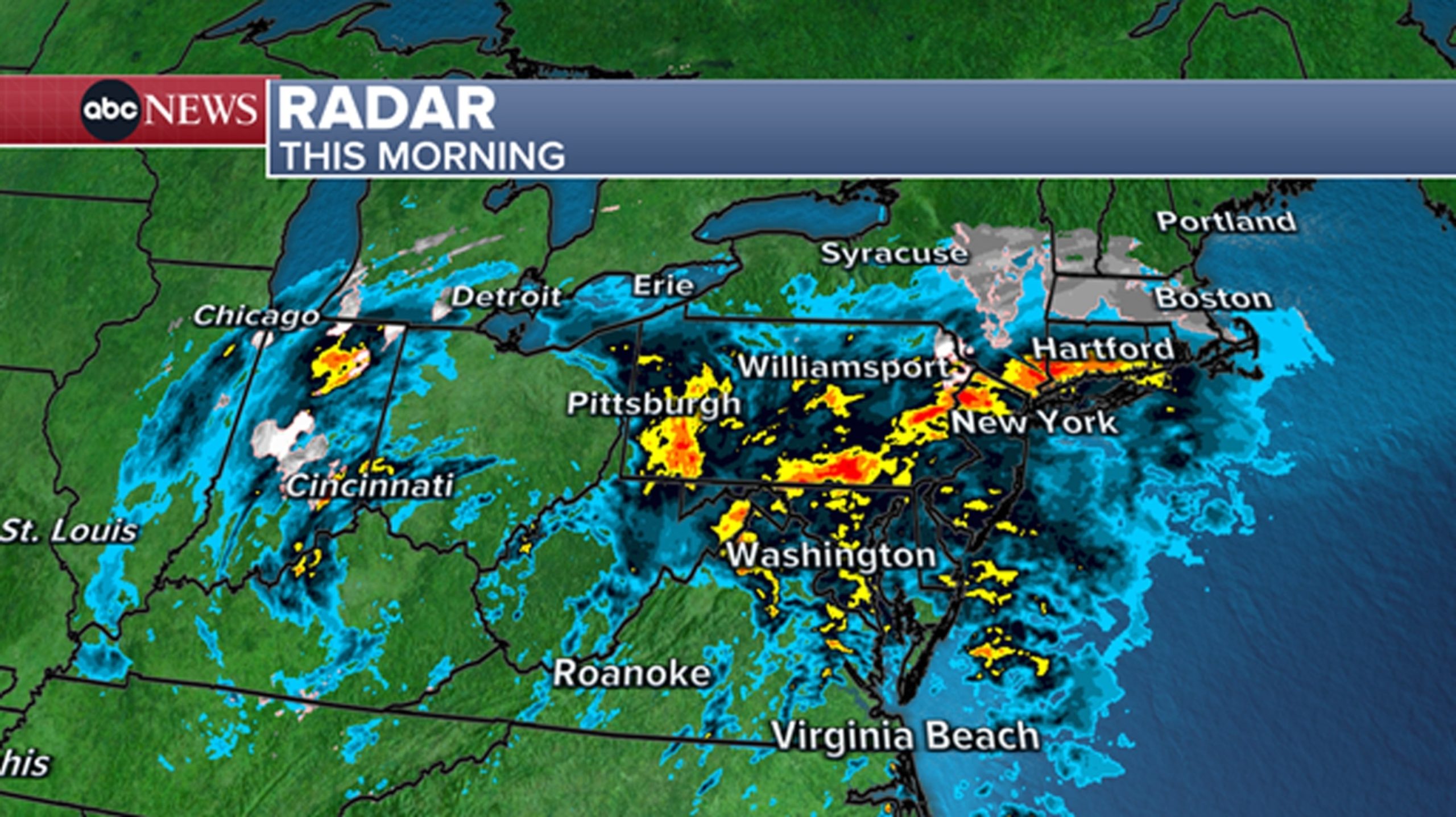Heavy Rainfall in Northeast Triggers Flood Watch for 15 Million Americans
The northeastern region of the United States is currently experiencing heavy rainfall, leading to a flood watch for approximately 15 million Americans. This significant weather event has raised concerns among residents and authorities as they brace themselves for potential flooding and its associated risks.
The National Weather Service (NWS) has issued flood watches for several states in the Northeast, including New York, New Jersey, Pennsylvania, Connecticut, and Massachusetts. These watches are in effect as the region faces a prolonged period of heavy rain, which could result in rising water levels in rivers, streams, and low-lying areas.
The primary cause of this heavy rainfall is a slow-moving low-pressure system that has stalled over the region. This system is drawing in copious amounts of moisture from the Atlantic Ocean, resulting in persistent rain showers and thunderstorms. Meteorologists predict that this weather pattern will persist for several days, exacerbating the risk of flooding.
Flood watches are issued when conditions are favorable for flooding to occur. They serve as a warning to residents and emergency management agencies to stay vigilant and be prepared to take necessary precautions. It is crucial for individuals living in flood-prone areas to stay informed about the latest weather updates and heed any evacuation orders or advisories issued by local authorities.
Flooding can have severe consequences, including property damage, road closures, and potential threats to human life. It can also lead to the contamination of water sources, increasing the risk of waterborne diseases. Therefore, it is essential for residents to take proactive measures to protect themselves and their properties.
Here are some important steps individuals can take to prepare for potential flooding:
1. Stay informed: Keep track of weather forecasts and updates from reliable sources such as the NWS or local meteorological agencies. Sign up for emergency alerts to receive timely notifications about any flood warnings or evacuation orders.
2. Create an emergency kit: Prepare an emergency kit that includes essential items such as non-perishable food, drinking water, flashlights, batteries, a first aid kit, and necessary medications. Keep this kit easily accessible in case of an evacuation.
3. Secure your property: Clear gutters and drains of any debris to ensure proper water flow. If you live in a flood-prone area, consider installing flood barriers or sandbags around your property to divert water away from vulnerable areas.
4. Develop an evacuation plan: Familiarize yourself with evacuation routes in your area and establish a plan with your family members or roommates. Determine a safe meeting point and ensure everyone knows how to reach it in case of an emergency.
5. Protect important documents: Store important documents such as identification papers, insurance policies, and medical records in waterproof containers or digitally back them up to prevent damage.
During a flood watch or warning, it is crucial to prioritize personal safety. Avoid driving through flooded roads or walking through moving water, as it can be deceptively powerful and sweep you away. If you encounter a flooded area, turn around and find an alternative route.
By staying informed, preparing adequately, and following safety guidelines, individuals can mitigate the risks associated with heavy rainfall and potential flooding. It is essential for everyone in the affected areas to remain vigilant and take necessary precautions to ensure their well-being and the safety of their communities.



